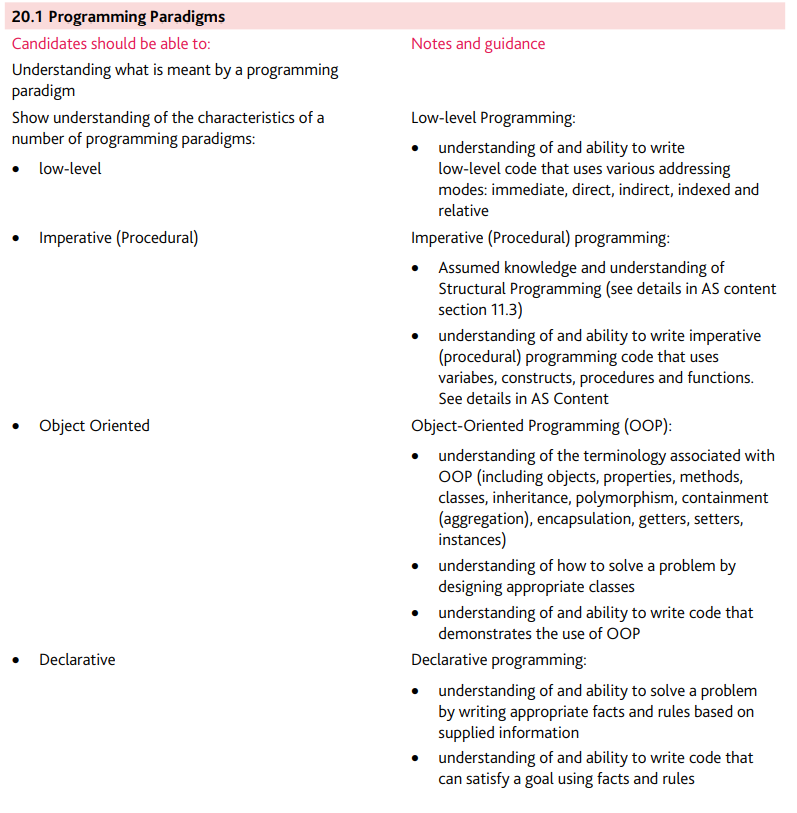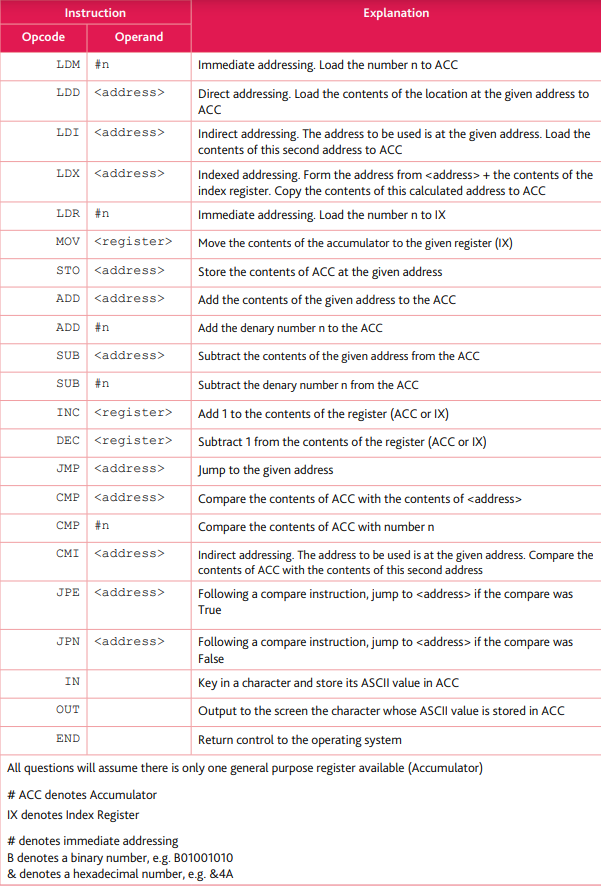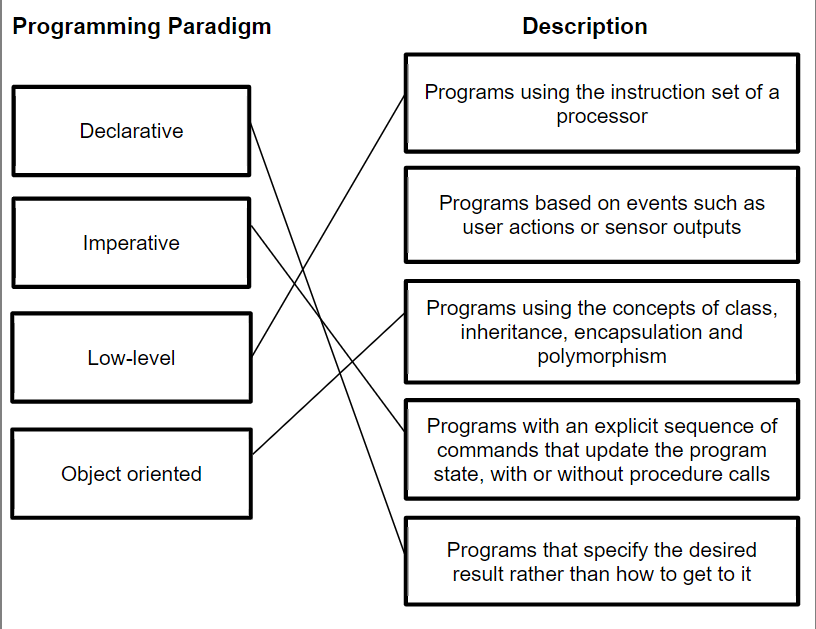Chapter20.1: Programming Paradigms

Programming paradigms: A programming style/classification // characteristics/features that programming language has/uses
Low-level
| Modes of addressing | Definition |
|---|---|
| Immediate | The operand is the data being used |
| Direct | The operand is the address of the data being used |
| Indirect | The content stored in the content of the operand is the data being used |
| Relative | The address of data being used is the current address add to the operand |
| Indexed | The address of the data being used is the content of the operand added to the content of index register |

Imperative
Describe what is meant by imperative programming paradigm
- A sequence of steps that changes the state of the program
- The steps are in the order they should be carried out
- e.g. procedural programming/language
- Groups code into self-contained blocks // spilt the program into modules
- … which are subroutines
--- Imperative languages use variables
- … which are changed using assignment statement
- … they rely on a method of repetition/iteration
- Statement provide a sequence of commands for the computer to perform
- … in the order written
- … each line of code changes something in the program run
Object Oriented Programming
A programming methodology that uses self-contained objects, which contain programming statements(methods) and data, and which communicate with each other
Explain what is meant by Object Oriented programming
- Create classes
- … as a blueprint for an object // objects are instances of classes
- … that have properties/attributes and methods
- … that can be private to the class // properties that can be only accessed by the class’s methods // encapsulation
- Subclass can inherit from superclass (child and parent)
- A subclass can inherit the methods and properties from the superclass
- A subclass can change the methods from the superclass // subclass can use polymorphism
- Objects can interact with each other
Explain the difference between a class and an object[^1]
- A class is the blueprint/design/template (from which the object are later created)
- A class consists of properties/attributes and methods/procedures/functions
- An object is an instance of a class
- An object must be based on a class definition
- Many objects can exists for the same class
Objects:
An instance of a class that is self-contained and includes data and methods
- Many instances can exists for the same class
- Must be based on the class definition
Properties
Data and methods within an object that perform a named action
Methods
A programmed procedure that is defined as part of a class
Classes
A template/blueprint defining the methods and data of a certain type of object
Inheritance
Process in which the methods and data from one class, a superclass or base class is copied to another class, a derived class/subclass
Polymorphism
Feature of OOP that allows a method to be defined more than once in a class, so it can be used in different situations
Containment(aggregation)
Defines a
one-wayrelationship /has-arelationship between two classes. In aggregation, the objects can exists independently with each other. ^2
Encapsulation
Process of putting data and methods together as a single unit, a class
Getter
A method that gets the value of a property
Setters
A method used to control changes to a variable
Instances
An occurrence of an object during the execution of a program
Declarative
Program that specify the desired result rather than how to get it
- Instruct a program of what is needed to done instead of how to do it
- … using facts and rules
- … using queries to satisfy goals
- Can be logical or functional
- Logical - states a program as a set of logical relations
- Functional - constructed by applying functions to arguments / uses a mathematical style

[^1]: 9691 w13 32 q4